What you need to know if you are considering heating your garage.
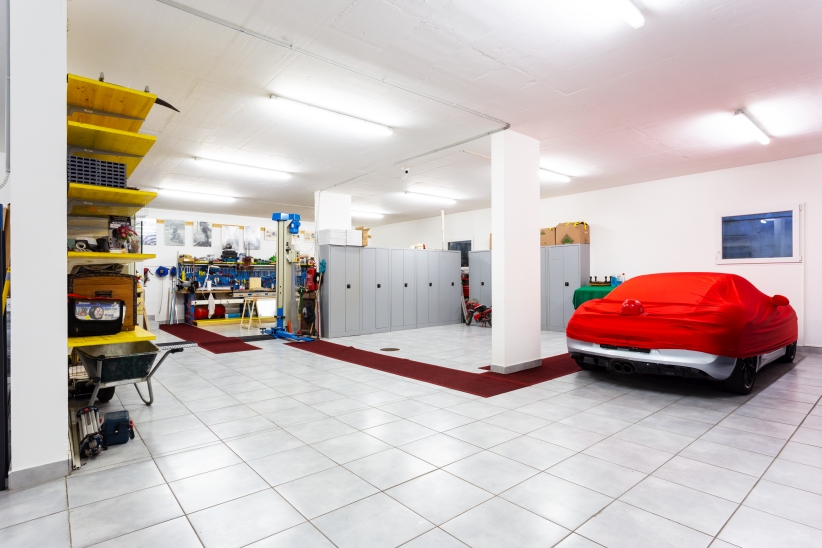
Our long, cold Canadian winters make it difficult to spend much time working in the garage. A heated garage used to be a luxury that was not an option for most of us. But now there are convenient and affordable ways to heat your garage so that you can use it all year round – even in the middle of winter.

There are many benefits to having a heated garage. Aside from being able to comfortably work on your vehicle, a garage can be a perfect space for a workshop, a studio for art projects, or even as an extra living space for those times when the house feels a bit too cramped.
This article will help explain some of the options available, as well as how to determine which one is best suited to your needs.
Insulation
If you’re going to add a heater to your garage, the first thing you should do is insulate it. Insulating the garage will help keep the cold air out, while keeping the warm air in. Without adequate insulation, most of the heat you generate will be lost, no matter which heater you choose. Insulating the walls, the ceiling, and the garage door will go a long way to retaining that heat, and cutting down on costs. Sealing windows with a sheet of plastic, and adding weather stripping to windows and doors will also help.
Depending on where you live and how cold it gets, these steps might be enough to make your garage comfortable. But for our Canadian winters, insulating is just the first step towards a heated garage.
Types of Heaters
There are many different types of heaters to choose from. To determine which heater is best suited to your needs, you should consider the size of your garage, how you plan to use the space, and how warm you’d like it to be. Your budget is also a major consideration. Some heaters require access to a gas line or a generous power supply, which is an added expense if they’re not already in place.
If you plan on spending a lot of time in the garage over the winter, you’ll probably want a heater that will maintain a consistent heat all day, with a programmable thermostat. This way, you’re not starting every day by heating up a freezing cold garage. But if you only plan on being there for an hour or two every once in a while, you can probably get by with a smaller portable heater.
The following are some of the many options available.
Electric
The most affordable heating option is the portable electric space heater. They don’t require installation – you just plug them into an outlet and turn them on, and there’s no need to worry about ventilation. Most newer models are energy efficient and programmable, so the cost to run them is fairly low. These heaters aren’t strong enough to warm an entire garage, but provide an extra bit of warmth if you only need it once in a while.
There are also wall and ceiling-mounted options that are more powerful than the portable units. These are capable of heating a larger area, but you might need multiple units if your garage is uninsulated. You’ll need to make sure that your garage is capable of supplying enough power to these larger units.
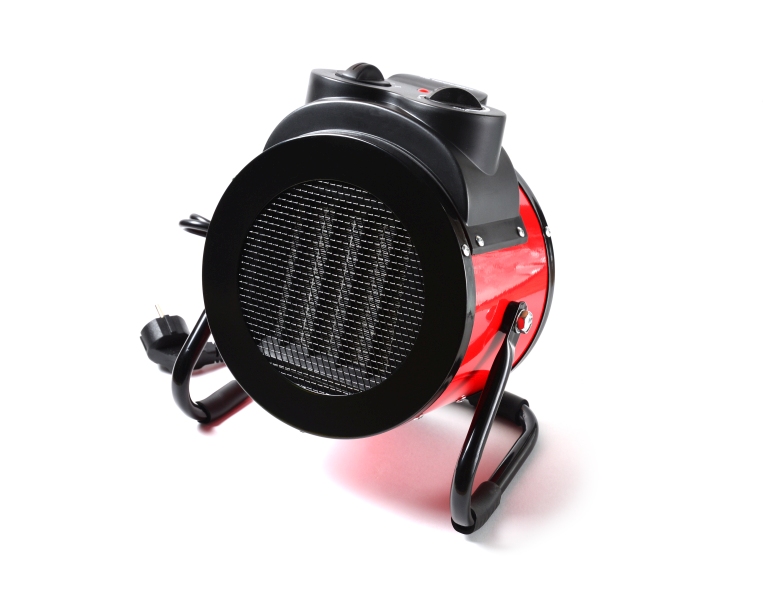
Always consider all options and choose the best solution for you!
Propane
Propane heaters heat up quickly and can provide enough heat to comfortably warm a large space. Propane is an energy efficient and fairly inexpensive fuel. There are a variety of different sizes and types available, and higher end units have many built-in safety features.
It’s important that you don’t put anything on top of the heater, and that it isn’t installed on or near anything combustible. Propane heaters use oxygen and can pose a carbon monoxide threat, so it’s vital that you keep the garage ventilated. If you do decide to use a propane heater, make sure to install a carbon monoxide detector in the space, just in case.
Infrared
Infrared heaters are energy efficient and fairly inexpensive, and are available in portable, wall-mounted, or ceiling-mounted styles. These heaters use a heating tube that radiates heat into the space, heating the objects in the room rather than the air. They don’t use oxygen and they won’t dry out the air like other heaters, so once they get going they provide a more comfortable warmth than some of the other options.
Most infrared heaters can only provide heat to a limited area, so you may require multiple units for a larger garage. The room will cool down very quickly once these heaters are turned off, meaning that any time you want the room to be warm, the heater will need to be on. If using one of the gas-powered models, it’s important to ensure proper ventilation.
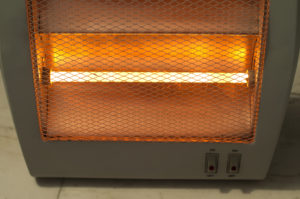
Forced Air
If you are planning on spending a lot of time in your garage and want it to be consistently warm, forced air heating is a good option to consider. Forced air heaters work by blowing hot air into the space. These can be fairly efficient and do a great job of providing lots of heat. However, they are complicated to install and usually require ductwork, so it’s a job best left to a professional. These heaters can be fairly noisy, and the blowing air will send dust and other particles flying around the space, which is a problem if you are doing any painting or woodworking, etc.
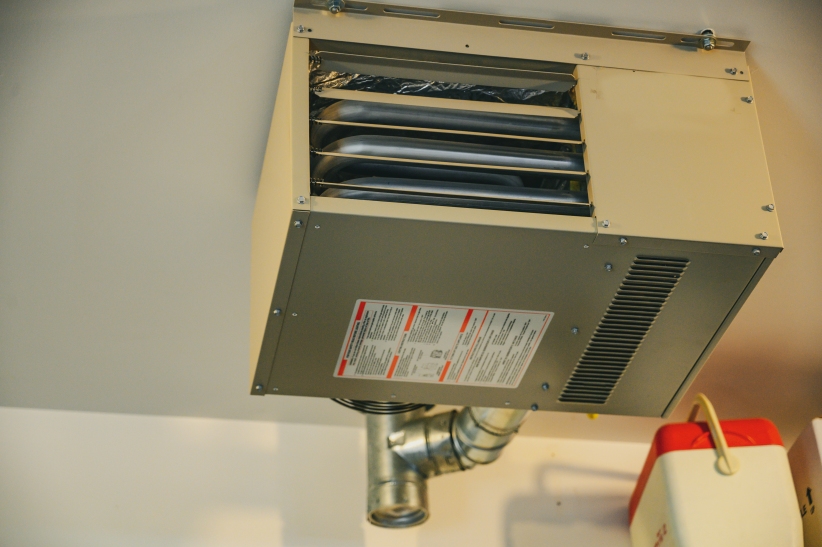
Ductless
Ductless heaters, also known as ‘split’ or ‘mini-split’ systems, have the added bonus of acting as an air-conditioner in the summer. These units are eco-friendly and energy efficient. They consist of two components – an outdoor compressor, and a wall-mounted indoor unit. With a big enough unit, the heating capabilities are similar to that of central heating, but without the need for ducts.
Ductless systems are more expensive than other options, but the energy savings should balance that out over time. Most homeowners will need to hire a professional for installation, but these units are relatively easy to install so the job shouldn’t take too long. A professional will also make sure you get the correct sized unit, otherwise it might not be enough to heat the space. These units require regular maintenance in order to operate properly, so that can be a deterrent for some.
Convection
Convection heaters work by drawing cool air into the unit, where it’s heated and circulated back out into the room, heating it up over time. Convection heaters are programmable and can be set to a specific temperature. They will run intermittently once that temperature is reached. It can take a while for a convection heater to comfortably heat a large garage, but once the space is heated, a convection heater can maintain that warmth over a longer period than some of the other options.
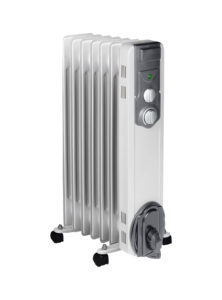
Heater Size
It’s important to get the right sized heater for your needs. There are a few factors you need to consider in order to determine the best heater for your space. The size of your garage, whether or not it’s insulated, and how comfortable you want to be in there will help decide which option suits your needs.
How much heat a heater can supply is measured in BTUs (British Thermal Units). To determine how many BTUs you need to heat your space, measure the length and width of your garage then multiply them to get the square footage. Most garages have fairly high ceilings, and since hot air rises, that space needs to be factored in as well. Take the square footage and multiply it by how high your ceiling is to determine your garage’s cubic feet.
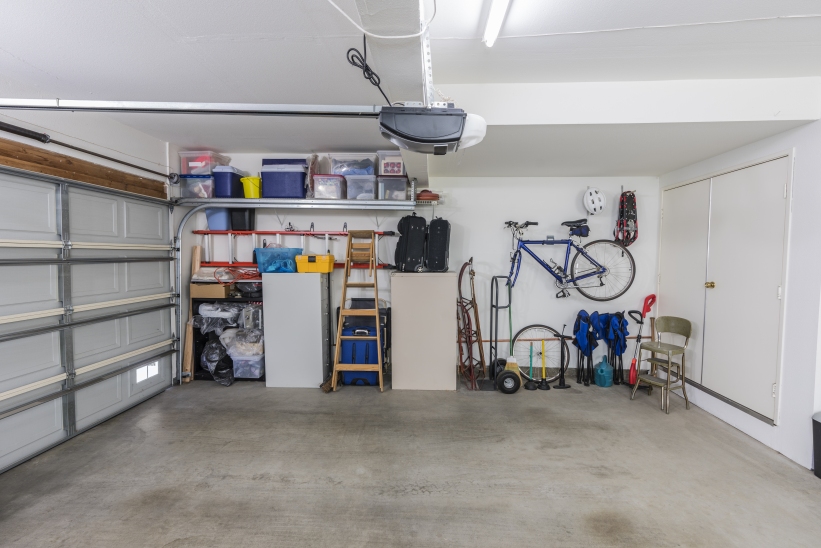
For example, if your garage is 20 feet long and 20 feet wide, with a 10 foot high ceiling: 20’ × 20’ × 10 = 4,000 cubic feet
Most garages will need between 30 to 60 BTUs per foot, depending on the climate and how well the garage is insulated. Some heaters list their heating capacity in watts, rather than BTUs. A good rule of thumb is 10 – 15 watts per foot.
Powering the Heater
You’ll need to make sure that your garage is properly equipped to power whichever heater you choose. It’s a good idea to have an electrician come and take a look before you make any decisions about which type of heater to buy. They can let you know what your garage can handle, and what kind of work would be required to heat your garage the way you’d like.
Electric
Depending on which style of electric heater you choose, you may need to have an electrician add more power to your garage. Most garages can handle the needs of a small electric heater, but the power needs of the larger, hard-wired models might be too much.
Electric heaters use between 2 to 5 kw, which means they require 110 to 208 Volts and 16 to 30 Amps of power. Not all garages are equipped with this much power. The solution is to have an electrician run a new line to the garage, which is relatively easy if your garage is attached to your house. If your garage is detached, they can install a sub-panel or upgrade the existing service.
Natural Gas or Propane
You’ll need to have a gas line running to your garage for heaters that run on natural gas. If you don’t already have a gas line to your garage, you’ll need a professional to install one for you. This is not a job for the average homeowner. For propane heaters, you’ll need a propane tank, which can take up quite a lot of space. They also need to be filled regularly, which can become a nuisance.
Some gas and propane heaters use an electric powered fan to blow the hot air, as well as electricity to operate some of the controls, so they require access to an electrical outlet.
For both gas and propane heaters, proper ventilation is an important consideration. Natural gas heaters require an exhaust vent to the outside. This is usually done by attaching a duct to the unit and running it up through the ceiling.
Locating the Heater
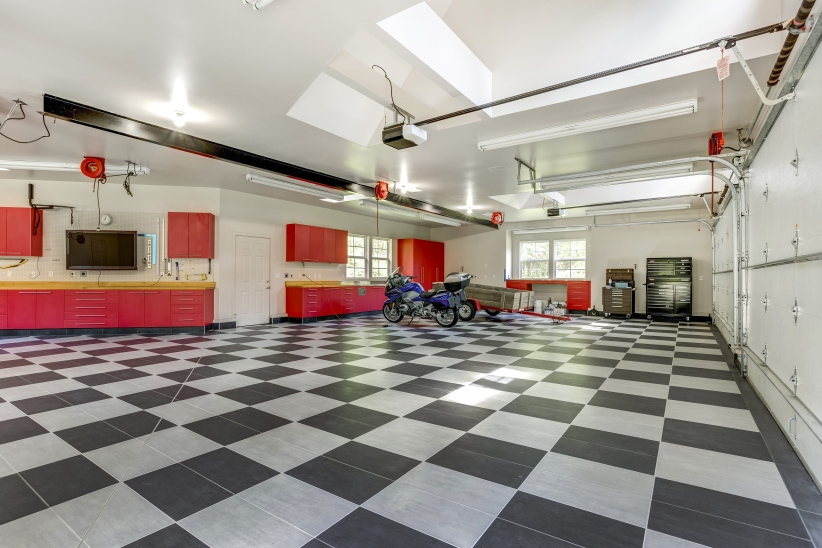
Where you locate the heater can make a big difference to how effectively it will heat your garage. Most heaters work best in the coldest corner of the room, pointed towards the middle of the garage. Different heaters have different requirements. Check the manufacturer’s instructions to make sure that you place the heater correctly. An incorrectly installed or located heater can result in a claim on your homeowner’s insurance being denied in the event of a fire.
With any heater, it’s very important that you make sure there isn’t anything combustible nearby, and never put anything on top of the heater or cover it in any way.
Safety Concerns
When it comes to installing and operating your heater, there are things you need to be aware of to reduce health hazards or fire risks. The following are some of the safety concerns to be aware of.
- Make sure your garage is properly ventilated if using a natural gas or propane heater. Failure to do so could result in carbon monoxide poisoning.
- Do not place the heater directly against the wall.
- Keep combustible materials at least 3 feet away from the heater.
- Do not spray solvents near the heater. Doing so could cause a fire.
- It is dangerous to use an extension cord with an electric heater – they should be plugged directly into a power outlet.
Do-it-yourself or call a professional?
It’s easy enough for most homeowners to add insulation or weather stripping, and a portable heater isn’t a problem to quickly set up. But for some heating options, the help of a professional is a necessity. For heaters that will be hard-wired in place, anything using gas lines, or for installing ductwork, make sure and get a professional to come and do the job properly. They can advise you on the best choice for your needs, and make sure that you are satisfied with the results.

Donat Sagi
owner
Cost saving tips
Many people think that they will save money by setting the temperature to a much lower setting, or even turning the heat off altogether, when they are not using the garage. But when you want the garage to be warm, the heater has to work much harder to crank out enough heat to raise the temperature to where you want it to be. It’s better to maintain a consistent temperature in the garage at all times. You can set the temperature to a lower setting at night or when you’re not going to be spending time in the garage, but try to stay within a few degrees.
To see if there are other ways to cut down on costs, call a professional to come and have a look. They can make suggestions on how to better insulate and seal up any areas where you might be losing heat and wasting money.
Conclusion
Whether you want to be able to work on your vehicle in a comfortably warm space, or you just like the idea of getting into a toasty car on a cold winter morning, with the affordable and convenient options available, having a heated garage has never been easier.
 Fire and Smoke Safety
Fire and Smoke Safety